In the sizzling realm of culinary exploration, the battle between tradition and innovation rages on. Enter the enigmatic induction cooktop, a technological marvel that dances with magnetic fields to bring precision and speed to your kitchen repertoire.
Yet, amidst the allure of induction, a question looms large: Can the trusty aluminum pan, a stalwart of kitchens worldwide, find its rhythm on this magnetic stage? As we embark on this journey of metallic matchmaking, we unravel the mysteries, dispel the myths, and uncover the secrets that simmer beneath the surface.
Get ready to explore the captivating realm where aluminum pans and induction cooktops collide, forging a culinary ballet that might just redefine the way you experience the joy of cooking.
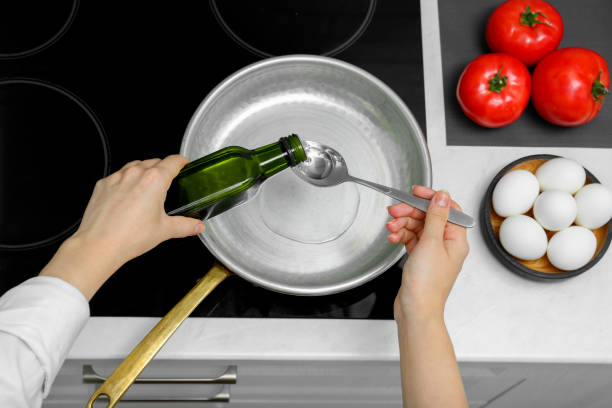
Do Aluminum Pans Work On Induction
No, aluminum pans do not work on induction cooktops.
In the realm of kitchen essentials, the debate surrounding aluminum pans and induction cooktops remains a topic of intrigue. Induction cooking relies on magnetic fields, and aluminum lacks magnetic properties.
Unquestionably, the compatibility of aluminum pans with induction cookware has become a pivotal aspect for home cooks seeking efficiency in their kitchens.
While aluminum is celebrated for its lightweight and excellent heat conduction, the absence of magnetic responsiveness renders it incompatible with induction cooktops.
The Science Behind Induction Cooking: A Magnetic Affair
At the core of induction cooking lies the magnetic principle. Induction cooktops generate a magnetic field that induces an electric current in compatible cookware, leading to rapid and precise heating. Iron and steel, with their magnetic qualities, seamlessly interact with induction cooktops.
However, aluminum, despite its exceptional thermal conductivity, lacks the magnetic resonance required for induction heating, making it an unsuitable companion for this cooking technology.
Aluminum Pans: Lightweight Marvels with a Magnetic Dilemma
Aluminum pans are revered for their lightweight design, even heat distribution, and affordability. These characteristics make them a popular choice in kitchens worldwide.
However, when it comes to induction cooking, the absence of ferromagnetic properties in aluminum becomes a significant drawback.
Home cooks enamored with the ease and speed of induction technology find themselves at a crossroads when their beloved aluminum pans prove incompatible.
Navigating Induction Cookware Options: Choosing the Right Materials
For those passionate about induction cooking, the selection of appropriate cookware is paramount. Opting for materials like cast iron or stainless steel ensures compatibility with induction cooktops, allowing users to harness the full potential of this efficient cooking method.
While aluminum pans might need to take a back seat in induction-ready kitchens, the diverse array of induction-compatible options ensures that culinary enthusiasts can continue to explore and experiment with their favorite recipes.
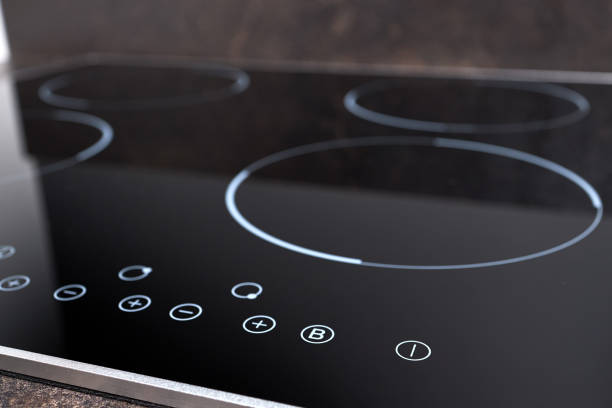
Understanding Induction Cooking
Explanation of How Induction Cooktops Work
1. Use of Magnetic Fields
Induction cooktops operate through the ingenious use of magnetic fields. Within the cooktop, a copper coil is present, carrying an alternating current. This current generates a magnetic field around the coil.
As soon as a compatible ferromagnetic material, like iron or steel, is placed on the cooktop, the magnetic field induces an electric current in the cookware.
This process is fundamental to the functioning of induction cooktops, distinguishing them from traditional gas or electric stovetops.
2. Generation of Heat in the Cookware
The induced electric current in the cookware generates heat directly within the vessel. Unlike conventional methods that transfer heat from a burner to the cookware, induction cooking ensures rapid and efficient heat production directly within the pot or pan.
This method not only accelerates the cooking process but also minimizes heat loss, contributing to a more energy-efficient cooking experience.
Advantages of Induction Cooking
1. Energy Efficiency
Induction cooktops stand out for their remarkable energy efficiency. Since heat is generated directly in the cookware, there’s minimal wasted energy. Traditional stovetops, on the other hand, lose a significant amount of heat to the surroundings, making induction cooking an eco-friendly and cost-effective choice.
Energy-conscious consumers find induction cooking appealing due to its ability to bring water to a boil faster and maintain precise temperature control, saving both time and resources.
2. Precise Temperature Control
Induction cooktops offer unparalleled precision when it comes to temperature control. Unlike gas stoves that can take time to adjust, induction cookers allow immediate changes in temperature. This responsiveness makes it easier to execute delicate cooking techniques, ensuring dishes are cooked to perfection.
The precision in temperature control not only enhances cooking outcomes but also reduces the likelihood of burning or overcooking, leading to consistently delightful culinary results.
3. Safety Features
Safety is a paramount consideration in induction cooking. One notable safety feature is that induction cooktops remain cool to the touch during operation. Since the heat is generated within the cookware, the surface of the cooktop itself doesn’t become dangerously hot.
Induction cookers often come equipped with automatic shut-off features, further preventing accidents. The absence of an open flame and the ability to set maximum temperature limits contribute to a secure cooking environment, making induction cooktops a preferred choice for families and individuals prioritizing safety in the kitchen.
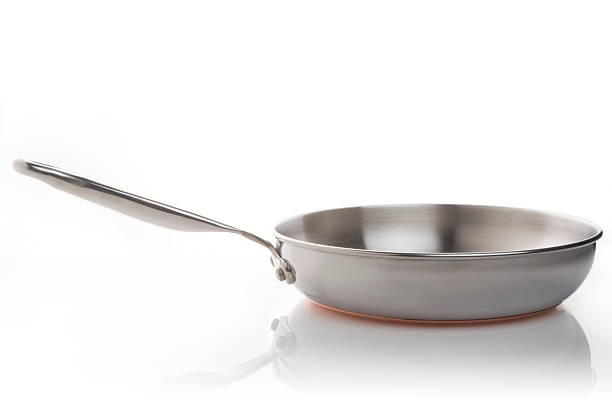
Characteristics of Aluminum Pans
Overview of Aluminum as a Material for Cookware
Aluminum is a versatile and widely-used material in the production of cookware. Its popularity stems from its excellent heat conductivity, durability, and affordability. Aluminum pans are known for their ability to distribute heat evenly across the cooking surface, ensuring consistent and efficient cooking results.
The lightweight nature of aluminum makes it a practical choice for everyday cooking, providing both professional chefs and home cooks with a reliable and user-friendly option.
Thermal Conductivity of Aluminum
The standout feature of aluminum pans is their exceptional thermal conductivity. Aluminum is an excellent conductor of heat, meaning it quickly and uniformly transfers heat to the entire cooking surface.
This rapid heat distribution allows for precise temperature control, making aluminum pans suitable for a wide range of cooking techniques.
Whether searing, sautéing, or simmering, the responsiveness of aluminum to temperature adjustments provides cooks with the flexibility needed to achieve optimal results in their culinary endeavors.
Lightweight Nature of Aluminum Pans
Aluminum pans are prized for their lightweight construction. This characteristic makes them easy to handle and maneuver in the kitchen, enhancing the overall cooking experience.
The reduced weight is particularly advantageous for those who may have difficulty lifting heavier cookware or for those who appreciate the convenience of easily transferring pans from stove to table.
The combination of thermal efficiency and a lightweight design makes aluminum pans a preferred choice for both professional chefs in bustling kitchens and home cooks seeking practicality.
Affordability and Popularity
Affordability is a key factor contributing to the widespread popularity of aluminum pans. Compared to some other materials used in cookware, such as stainless steel or copper, aluminum is a cost-effective option without compromising on performance.
This accessibility makes aluminum pans an excellent choice for individuals setting up their kitchens or those looking to expand their cookware collection without breaking the bank.
The affordability of aluminum pans, coupled with their impressive cooking capabilities, has solidified their status as a staple in kitchens worldwide. Whether in restaurant kitchens or home settings, aluminum pans continue to be a reliable and accessible choice for a diverse range of cooking needs.
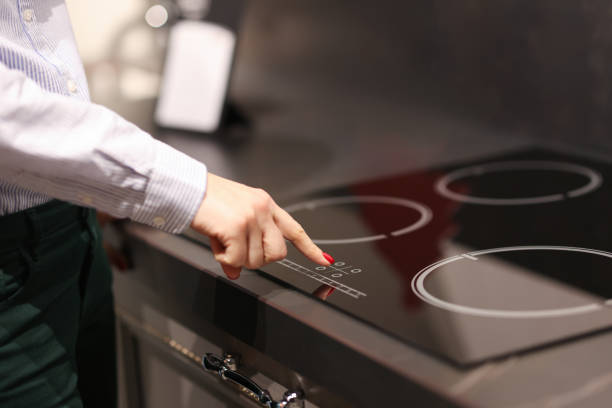
Compatibility of Aluminum with Induction
The Magnetic Properties of Aluminum
1. Explanation of Why Aluminum is Not Magnetic
One key aspect of induction cooking is the reliance on magnetic fields to generate heat. While aluminum itself is not magnetic, it is important to note that induction cooktops require materials with magnetic properties to function efficiently.
Aluminum lacks ferromagnetic qualities, which means it does not respond to magnetic fields in the way needed for induction cooking.
Consequently, standard aluminum cookware is not compatible with induction cooktops. However, advancements in cookware design have led to the development of induction-ready aluminum pans through strategic modifications.
2. The Role of Magnetic Induction in Induction Cooktops
Induction cooktops operate by creating a magnetic field that induces an electric current in compatible cookware. This induced current generates heat directly within the cookware, offering precise temperature control and energy efficiency.
The absence of an open flame and the rapid response to temperature adjustments are key benefits of this magnetic induction process.
Understanding the magnetic principles behind induction cooking helps highlight the need for cookware with magnetic properties, leading to the emergence of induction-ready aluminum options.
Induction-Ready Aluminum Cookware
1. Types of Aluminum Pans Designed for Induction
To make aluminum pans compatible with induction cooktops, manufacturers often incorporate a layer of magnetic material into the base of the cookware. This layer is essential for the efficient transfer of magnetic energy from the cooktop to the pan, allowing the induction process to take place.
Induction-ready aluminum pans are increasingly popular and come in various forms, including frying pans, saucepans, and griddles.
It’s essential for consumers to look for specific indicators, such as an induction symbol or label, to ensure that the aluminum cookware is designed for use with induction cooktops.
2. Features to Look for in Induction-Compatible Aluminum Cookware
When selecting induction-ready aluminum cookware, certain features enhance the overall compatibility and performance. Look for pans with a thick, flat base, as this ensures better contact with the induction cooktop for optimal heat transfer.
A ferromagnetic layer integrated into the base enhances the pan’s responsiveness to the magnetic field, facilitating efficient heating.
Handles made of materials with low heat conductivity, such as stainless steel or heat-resistant plastic, are practical considerations for safe handling during induction cooking. Ensuring the cookware is labeled as “induction-compatible” or displaying the induction symbol provides assurance of its suitability for use with induction cooktops.
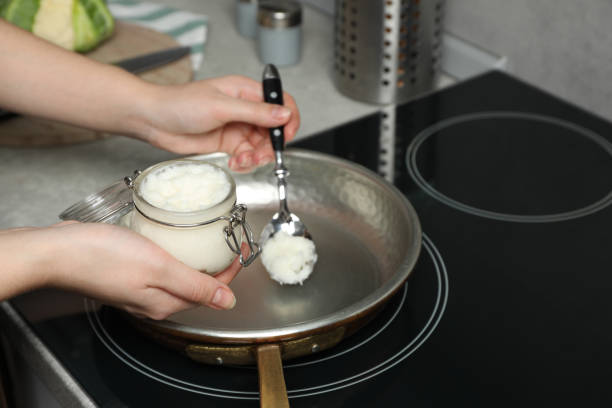
Testing Aluminum Pans on Induction Cooktops
Personal Experiences and Observations
Before delving into specific tests, personal experiences and observations play a crucial role in assessing the compatibility of aluminum pans with induction cooktops. Users may notice inconsistent heating or a lack of responsiveness in certain aluminum pans.
Such observations can prompt individuals to conduct more systematic tests to confirm compatibility and optimize their cooking experience.
Conducting a Magnet Test
1. Step-by-Step Guide to the Magnet Test
a. Select a Magnet: Begin by choosing a common refrigerator magnet or any magnet with moderate strength.
b. Test the Pan Base: Place the magnet against the base of the aluminum pan. Ensure the pan is clean and dry for accurate results.
c. Observe the Interaction: If the magnet sticks firmly to the pan, it suggests the presence of ferromagnetic material in the base, making the pan induction-compatible. If the magnet does not stick or exhibits weak adherence, it indicates the absence of magnetic properties, making the pan unsuitable for induction cooking.
2. Interpreting the Results
The magnet test is a simple yet effective way to assess the compatibility of aluminum pans with induction cooktops. If the pan exhibits magnetic properties, it implies that it has been designed or modified to include materials that respond to the magnetic field of the induction cooktop. This ensures optimal heat transfer and efficient cooking.
Conversely, if the magnet shows no attraction, it signifies that the aluminum pan lacks the necessary magnetic elements, making it incompatible with induction cooking.
Conducting a Water Boiling Test
1. Demonstration of the Water Boiling Process
a. Fill the Pan with Water: Take a standard aluminum pan designed for induction or a pan you suspect may be compatible. Fill it with an appropriate amount of water.
b. Place on Induction Cooktop: Put the pan on the induction cooktop and set the desired temperature.
c. Observe Boiling Time: Note the time it takes for the water to reach a rolling boil. The efficiency of the boiling process provides insights into the pan’s compatibility with the induction cooktop.
2. Comparison of Results with Other Cookware Materials
To validate the results, conduct a similar water boiling test with other cookware materials known to be induction-compatible, such as stainless steel or cast iron. Compare the boiling times to identify any significant differences.
Induction-compatible aluminum pans should demonstrate efficiency comparable to other suitable materials.
This comparative analysis helps users understand the performance of aluminum pans on induction cooktops relative to other cookware options.
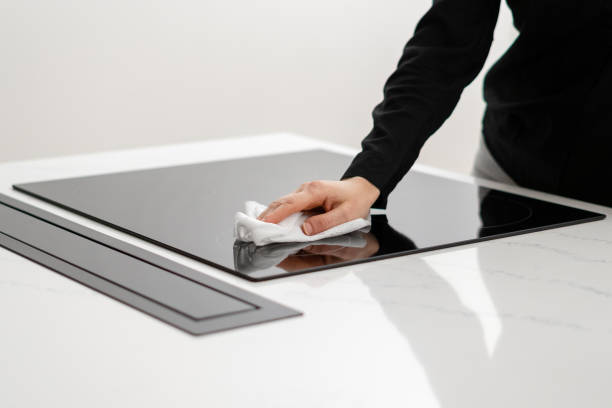
Advantages and Disadvantages of Using Aluminum on Induction
Pros of Using Aluminum Pans on Induction
1. Rapid Heating and Even Cooking
Aluminum pans are known for their exceptional thermal conductivity, making them well-suited for induction cooking. The rapid and even distribution of heat ensures that the pan heats up quickly and maintains a consistent temperature across its surface.
This characteristic is particularly advantageous for precise cooking techniques, allowing for better control over the cooking process.
2. Lightweight and Easy to Handle
The lightweight nature of aluminum pans makes them easy to handle and maneuver, adding to the convenience of cooking on induction surfaces. This characteristic is especially beneficial for individuals who prefer cookware that is not overly heavy.
The combination of rapid heating and a manageable weight enhances the overall user experience, catering to both professional chefs and home cooks.
3. Cost-Effectiveness
Aluminum pans are often more affordable compared to cookware made from other materials such as stainless steel or copper. This cost-effectiveness makes aluminum a popular choice for those looking to build a functional cookware collection without a substantial financial investment.
The affordability of aluminum pans allows a broad range of consumers to enjoy the benefits of induction cooking without breaking the bank.
Cons of Using Aluminum Pans on Induction
1. Limited Induction Compatibility
While advancements have been made to create induction-compatible aluminum pans, not all aluminum cookware is suitable for induction cooking. Traditional aluminum pans may lack the necessary magnetic properties, rendering them incompatible with induction cooktops.
Users need to carefully select pans labeled as “induction-ready” or those that exhibit magnetic properties to ensure optimal performance on induction surfaces.
2. Potential Warping Issues
Aluminum has a lower melting point compared to some other materials used in cookware. Prolonged exposure to high heat, especially on induction cooktops, may lead to potential warping or distortion of the pan.
This can impact the pan’s ability to make proper contact with the cooktop, affecting heat transfer and cooking efficiency. Users should be cautious about extreme heat settings and sudden temperature changes to prevent warping.
3. Importance of Choosing the Right Aluminum Pan
The effectiveness of aluminum pans on induction cooktops relies heavily on the specific design and construction of the cookware. Choosing the right aluminum pan for induction cooking involves selecting those with a ferromagnetic layer integrated into the base.
Users should prioritize pans that have been explicitly designed or modified to enhance their compatibility with induction technology.

Tips for Using Aluminum Pans on Induction
Precautions to Prevent Warping
1. Avoiding High Heat Settings
One key precaution when using aluminum pans on induction cooktops is to avoid excessively high heat settings. Aluminum has a lower melting point compared to some other cookware materials, and prolonged exposure to very high temperatures can lead to warping.
Moderating heat settings and using medium to medium-high temperatures will help prevent the risk of warping, ensuring the longevity and performance of the aluminum pan.
2. Proper Preheating Techniques
Implementing proper preheating techniques is essential for preventing warping and ensuring even cooking. Instead of rapidly raising the heat to high levels, gradually increase the temperature during preheating.
This allows the aluminum pan to adjust to the rising temperature more evenly, minimizing the risk of distortion. Preheating at a moderate pace also contributes to better heat distribution across the pan’s surface.
Cleaning and Maintenance Tips for Aluminum Pans
1. Hand Washing Recommendations
While some cookware is dishwasher-safe, it’s generally advisable to hand wash aluminum pans, especially those used on induction cooktops. The harsh detergents and intense water pressure in dishwashers can potentially damage the protective layer of the pan.
Hand washing with a mild dish soap and a soft sponge is a gentler approach, preserving the integrity of the aluminum.
2. Avoiding Abrasive Cleaning Tools
Aluminum pans are prone to scratching, and using abrasive cleaning tools can compromise their non-stick or protective coatings. To maintain the quality of the pan, avoid using steel wool, abrasive pads, or harsh scouring brushes.
Instead, opt for soft sponges or non-abrasive cleaning pads. This gentle approach to cleaning helps preserve the surface of the aluminum pan, ensuring it continues to perform well on induction cooktops.
Alternatives to Aluminum for Induction Cooking
Induction-Compatible Cookware Materials
1. Stainless Steel
Stainless steel is a popular and versatile choice for induction cooking. It possesses magnetic properties, making it responsive to induction cooktops. Stainless steel cookware offers excellent durability, corrosion resistance, and a sleek appearance.
It is known for its ability to distribute heat evenly across the cooking surface, providing precise temperature control. Its compatibility with induction technology and durability make stainless steel a reliable alternative to aluminum for those seeking efficient and long-lasting cookware.
2. Cast Iron
Cast iron cookware is another excellent option for induction cooking. Its ferrous nature makes it responsive to magnetic induction, ensuring efficient heat transfer.
Cast iron pans are revered for their exceptional heat retention and distribution, making them ideal for slow cooking, roasting, and even baking.
While cast iron cookware may be heavier than aluminum, its versatility and durability make it a preferred choice for many cooks using induction cooktops.
3. Enamel-Coated Cookware
Enamel-coated cookware, such as enamel-coated cast iron or enamel-coated steel, can also be suitable for induction cooking. The underlying material, whether iron or steel, provides the necessary magnetic properties for induction compatibility.
The enamel coating adds an extra layer of protection, preventing rust and facilitating easy cleaning. Enamel-coated cookware comes in various colors and styles, offering both functionality and aesthetic appeal for induction cooking enthusiasts.

FAQs
Are aluminum pans compatible with induction cooktops?
Absolutely! While aluminum is not inherently magnetic, many induction cookware sets now come with an induction-compatible base, ensuring efficient heat transfer and excellent performance on your induction cooktop.
Do I need to buy special aluminum pans for my induction stove?
Not necessarily. Look for aluminum pans with an induction-friendly base, typically made with a layer of magnetic material. This ensures that your aluminum cookware works seamlessly on induction cooktops, giving you versatility and convenience in your kitchen.
Can I use my existing aluminum cookware on an induction cooktop?
Certainly! Check the bottom of your aluminum pans for an induction-compatible symbol or label. If it’s present, your pans are ready to go. If not, consider investing in an induction interface disc, allowing you to use your favorite aluminum cookware on your induction stove.
Are there any advantages to using aluminum pans on induction?
Absolutely! Aluminum pans are known for their excellent heat conductivity. When combined with an induction-compatible base, they offer quick and precise temperature control, making them an ideal choice for a wide range of cooking tasks on induction cooktops.
Will aluminum pans heat up quickly on induction stoves?
Yes, they will! Thanks to the efficient magnetic induction process, aluminum pans with an induction-compatible base heat up rapidly. This not only saves you time but also provides precise control over your cooking temperature.
Can I use high-quality aluminum pans on induction for professional cooking?
Certainly! Many professional chefs prefer aluminum cookware for its lightweight design and exceptional heat distribution. With an induction-compatible base, you can enjoy the benefits of aluminum pans while harnessing the power and efficiency of induction cooking in a professional kitchen setting.
Do aluminum pans work well with induction for delicate dishes?
Absolutely! The precise temperature control offered by induction cooktops makes aluminum pans a great choice for delicate dishes. Whether you’re melting chocolate or preparing a sensitive sauce, the even heat distribution ensures perfect results every time.
Are there any safety concerns with using aluminum pans on induction?
Not at all! When used with an induction-compatible base, aluminum pans are completely safe for induction cooking. They provide a stable and secure cooking surface, allowing you to enjoy the benefits of both aluminum cookware and induction technology without any worries.
Can I find a variety of aluminum pans suitable for induction cooking?
Certainly! The market offers a wide selection of aluminum pans with induction-compatible bases. From frying pans to saucepans and beyond, you can easily find the perfect aluminum cookware for your induction cooktop, providing you with a versatile and enjoyable cooking experience.
Do aluminum pans enhance energy efficiency when used on induction?
Absolutely! The combination of aluminum’s superb heat conductivity and the energy efficiency of induction cooking makes for a winning duo. Enjoy faster cooking times and reduced energy consumption, contributing to both environmental sustainability and cost savings in the long run.
Conclusion
In conclusion, while aluminum pans do not possess magnetic properties inherently, making them unsuitable for direct use on induction cooktops, there are alternative methods to make them compatible.
The use of induction interface disks or cookware with a layer of magnetic material on the base can effectively bridge the gap between aluminum pans and induction cooking technology.
Although this additional layer might slightly reduce the efficiency of heat transfer, it allows individuals to continue using their existing aluminum cookware while enjoying the benefits of induction cooking.
Ultimately, understanding these workarounds enables users to make informed decisions about their kitchen equipment, balancing convenience with the desire to harness the advantages of modern cooking technology.
Related Posts:
- What Pans Work With Induction (5 Surprising Facts)
- Can You Use Induction Pans On A Gas Stove (4 Cool Facts To Know)
- Can Copper Pans Work On Induction Hob (8 Cool Ways)
- Can You Reuse Aluminum Foil Pans (5 Cool Facts)
- Are Aluminum Pans Bad For You (7 Cool Reasons)
- Is It Safe To Put Aluminum Foil In Frying Pan (6 Helpful Reasons)